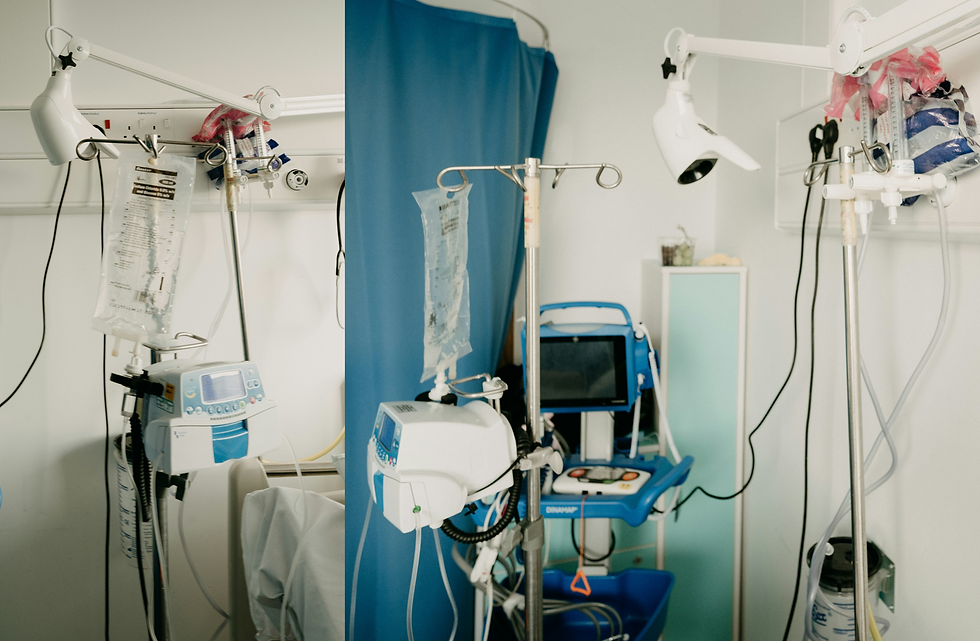“But the Benefits Outweigh the Risks”
- Beth Loring
- Aug 11
- 4 min read
Why do sub-par medical devices get to market and stay there?
By: Beth Loring and Hollie Johnston
Medical and combination device manufacturers often justify safety by saying, “the benefits outweigh the risks.” But is that good enough? As human factors (HF) professionals, we often make design recommendations to improve usability (and thus safety), but they are rejected because the system is technically good enough per FDA requirements, and change - especially late-stage change - would impact costs and timelines.

In some cases, legacy devices that have been on the market for many years never had an HF process applied and are considered “user interfaces of unknown provenance.” Nothing serious enough has happened to initiate device recalls, but they can be difficult to use and could cause harm.
Example: The EpiPen
It is difficult to tell which end of the pen contains the needle. This article states that the design of the device, "causes confusion over which end is which – and has led to people accidentally pushing their fingers into the needle. Between 1994 and 2007 there were over 15,000 unintentional injections from EpiPens, including many cases of trained healthcare professionals who accidentally gave themselves a dose of epinephrine in the thumb or finger while trying to deliver the life-saving medicine to someone else." A company called IntelliJect (now kaleo) designed a better injector for delivering epinephrine by applying rigorous user research and human factors engineering. They recently published a study showing how much more effective it is than other emergency-use autoinjectors, and yet the EpiPen remains on the market.
In other cases, new devices are brought to market because they show that the “benefits outweigh the risks,” and yet they lead to use problems that could cause harm which could have been avoided.
Example: Insulin Pumps & Continuous Glucose Monitors (CGMs)
Closed loop systems - insulin pumps and CGMs - have revolutionized treatment for patients with diabetes. However, there have been some usability issues uncovered in marketed devices that resulted in recalls. If these were usability tested thoroughly before launch, the recalls may have been prevented.
Tandem Diabetes recalled their insulin pump app due to a glitch that caused devices to unexpectedly shut down
Abbott recalled certain FreeStyle Libre 3 sensors after finding that a small number may provide incorrectly high glucose readings, which could lead to incorrect treatment decisions such as taking insulin when not required.
Consumer reports of confusing alarms and difficult-to-interpret readings have driven manufacturers to simplify alert systems and improve data presentation.
And there are many more recognized areas for improvement, from false lows due to compression when sleeping in certain positions, to the device profiles catching on clothing and other items.
Why does this happen?
Usually, it’s because HF/user research is not considered early enough in the development process. When conducted at a later stage - when the design is nearly frozen – the cost and time to make improvements is inevitably higher so they are rejected if all other regulations are met. In combination products, for example, companies like to wait until they have a successful drug product (clinical trial success) before putting too much money into the delivery system but then may run out of time for human factors in the rush to get to market.
A better approach
Thinking about end users early in the development process allows companies to uncover specific needs and deliver solutions tailored to those who are going to be using them. The amount of user research needed up-front is minimal, costs need not be prohibitive, and the overall return on investment can be huge.
We can see this movement beginning to happen when we look at consumer healthcare. Healthcare is rapidly decentralizing through home health, telehealth, and consumer health solutions. With greater health awareness and access to data, people increasingly self-diagnose and seek alternative therapies. This shift forces manufacturers to create more competitive, user-friendly solutions that work for those without medical education while ensuring accuracy and safety. As consumers use at-home diagnostic tools for things like cancer screening, cardiovascular assessments, and STD testing, these devices must be both highly usable and precise to ensure people receive appropriate treatment.
In summary
Whatever happened to delighting the user, or going above and beyond the minimum requirements for safety? If one reads the FDA guidance (2016) carefully, the primary authors (Molly Story and Ron Kaye) remind people of the benefits of good human factors to make successful products, not just safe ones. In the early 2000s, the rise of the World Wide Web brought attention to the importance of usability: Consumers finally had a choice of which website to use – if yours was terrible, the competitor was just one click away. Perhaps the same will happen with medical devices as they become more ubiquitous in the home and patients have more choice.
Undoubtedly, medical and combination devices should go beyond minimum safety standards. While some residual risk is often acceptable, manufacturers should take responsibility for better design. As medical devices become more common in homes and patients gain more options, identifying unmet needs is a crucial means of fuelling innovation and generating fresh opportunities for growth. By broadening the outlook to understand more about human behavior and the patient experience, and by supplementing traditional market research with qualitative HF research, a more comprehensive view of unmet user needs is possible. This understanding can then be used to drive innovations that can genuinely improve the lives of the people that use them, and not just meet the minimum regulatory requirements.




Comments